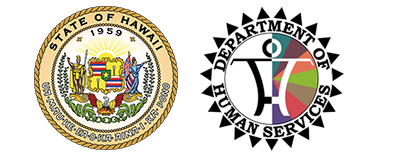DHS in the News: Let state pursue SNAP eligibles
Posted on Mar 26, 2015 in NEWSMarch 26, 2015
People in Hawaii who are eligible for food stamps should be encouraged to sign up for the benefit, which is funded by federal taxpayers to help impoverished people afford nutritious food. But the state should not, as a pending legislative measure proposes, set aside additional state taxpayer funding to pay local nonprofit groups to seek out potential clients and help enroll them in the Supplemental Nutrition Assistance Program (SNAP).
Numerous state agencies, primarily the departments of Human Services, Education and Health, already have outreach efforts throughout Hawaii to help impoverished individuals and families, including those who are homeless or who live in rural, isolated pockets of the neighbor islands. It would be better to enhance the efficiency of those existing networks than to create a whole new framework of private contract workers.
National research shows that a large percentage of Hawaii residents who are eligible for SNAP are not receiving benefits. More aggressive outreach could be worth $50 million to $150 million annual spending in the state, if all those eligible folks signed up, according to the research.
The task rightly lies mainly with the Department of Human Services, which administers SNAP at the state level. DHS supports the intent of HB 1347, but understandably prefers that lawmakers support its budget request as the avenue to boost SNAP, including through staffing and technological improvements.
SNAP is one of 15 nutrition-assistance programs administered by the U.S. Department of Agriculture’s Food and Nutrition Service. Others include the Special Supplemental Nutrition Program for Women, Infants and Children, the National School Lunch Program, and the Summer Food Service Program. All depend on continual, efficient collaboration among government agencies and affiliated nonprofit organizations to fulfill their role as America’s nutrition safety net.
An average of 193,565 people in Hawaii enrolled to receive monthly SNAP benefits in fiscal year 2014, about 40 percent of whom were children. The benefits received totaled more than $520 million for the year.
Some critics question whether the state government should be encouraging more people to seek out such assistance. But obviously it should. SNAP exists to help people feed themselves and their families. Hawaii’s food costs are among the highest in the nation. Clearly there is a need here, even among working people. There is no shame in maximizing use of this federal benefit, which helps not only the SNAP beneficiaries who have more healthful food to eat, but also the grocery stores, farmers markets and other outlets where they make the purchases.
Any worthy attempts to expand access to SNAP benefits, though, must be undertaken within the broader view of food stamps as temporary assistance, not a permanent entitlement. Just last week, the federal government announced innovation grants to 10 states that will test a range of strategies intended to help SNAP participants find jobs, increase their earnings and decrease their reliance on public assistance. Removing barriers to work for SNAP participants are major goals of the pilot projects, the most successful of which will eventually roll out on a national scale.
Hawaii is not among the 10 states, but that should not prevent our state agencies from trying to improve the system on their own. Finding the people who are eligible for SNAP but do not receive the benefits is a necessary improvement, in concert with programs that help beneficiaries get the education and job training they need to ultimately support themselves.
